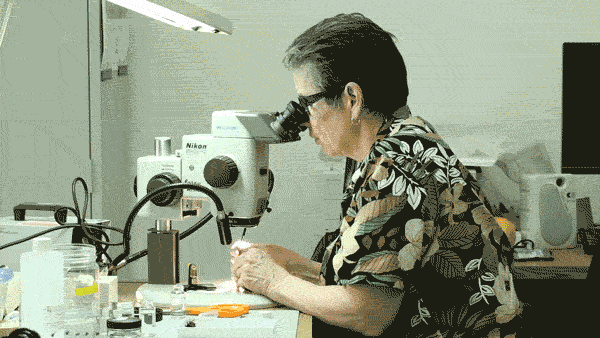Coif-conscious New Yorkers can take advantage of amazing salons around the city. They’re not the only ones who can appreciate a good shampoo and a blow dry, though. A subset of the bee specimens in the Museum’s Division of Invertebrate Zoology are also treated to a day of beautification before they join the research collection.
When collecting bees in the field, entomologists sometimes store their specimens in alcohol to stave off mold. But that's not a good long-term plan for preserving something with hair, so the first step in preparing a bee for posterity is washing it off, and then drying it.

The hair of bees, which helps many species gather pollen, then has to be immaculately “styled” so that their anatomical features are best preserved for scientists to study. She may not do elaborate braids or retro beehives, but Curatorial Assistant Melody Doering (above) is the Museum’s go-to insect stylist.
As with any visit to the salon, this starts with a good shampoo. Doering adds a single drop of soap to a vial of water, drawing a tiny bee bath. With a pair of tweezers, she gently removes the specimen from its field transport jar and places it in the soapy solution. A shake or two and a brief soak is all that’s needed to clean the alcohol from the bee’s fine hairs.
© AMNH
Next comes the blow-out. Doering pats off excess water and arranges the wings. Then, she positions the specimens in front of a makeshift bee dryer—the same kind of pump used to inflate air mattresses and birthday party rental bouncy castles. Hey, if a tool works, don’t knock it.
© AMNH
As with finicky salon-goers, the process doesn’t end there. Once the bees are washed and dried, Doering painstakingly brushes out the bees’ fuzz before pinning them into specimen boxes where they’ll have good hair days for many years to come.
© AMNH
And here's a rare look at the research-ready finished product!
© AMNH
To learn more about the Museum’s collections and how they’re prepared for study by researchers around the world, check out the web series Shelf Life.